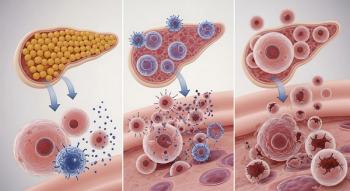
Lower diabetes costs by improving medication adherence
During their session at the AMPC conference in Orlando, presenters identified several diabetes management approaches that are improving medication adherence.
Although the death rate due to diabetes complications has declined, the rate of patients developing diabetes has risen in recent years, according to the Centers for Disease Control and Prevention (CDC). An estimated 20.9 million Americans were diagnosed with the disease in 2011, and it is the seventh leading cause of death.
During the session, "Diabetes-Exploring the New Frontier," at the Academy of Managed Care Pharmacy Nexus 2015 in Orlando, Heather Sundar, PharmD, vice president, clinical, research and new solutions at Express Scripts, discussed how new diabetes management approaches can help address this growing problem.
"We really need to think broader" when approaching diabetes care, she said, during the October 28 session which she co-presented with Amy M. Lugo, PharmD, a clinical pharmacy specialist at the Defense Health Agency Pharmacy Operations Division. "This is a national epidemic."
While the number of Americans living with diabetes is nearing 30 million, 86 million more are considered prediabetic, said Sundar, citing a static from the
As if the current numbers aren't troubling enough, by 2050
"You're going to have tons of expense in this space," said Sundar, noting that the cost of caring for these patients was already
Related:
"It's incredibly important, once patients are on the right medication or medications, that we do what we can to round out and manage the medication adherence to drive quality outcomes," said Sundar.
Behavioral-related obstacles
For medication adherence problems in diabetes care (and related conditions such as high blood pressure and high cholesterol), 39% of patients forget to take their medications, 10% refill prescriptions late, and 20% renew prescriptions late, according to Express Scripts' internal research.
This speaks to the need to take a tailored approach when attempting to improve adherence, said Sundar. "There's not a silver bullet, there's no one-size-fits-all, and we need to think about tailoring to that patient, that drug, at that time."
For example, a solution for patients forgetting to take medications might be medication reminder devices; a solution for late refills might be home delivery; and a solution for late renewals might be automatic refills with automatic renewals.
Cost obstacles
About 16% of the time, diabetic patients having trouble with adherence are struggling to pay out-of-pocket expenses, said Sundar, adding that the increasing number of high-deductible plans could exacerbate this problem.
"People are seeing the full cost of the medication for the first time," she said. "You do need to have safety nets in place so that people don’t go without medication."
Sundar added that predictive modeling, combined with a tailored solution, can help "move the needle" on medication adherence. It's important, she said, to get ahead of the adherence problem and reach out proactively before it occurs.
Remote health monitoring
Technology, said Sundar, is also important to improving diabetes health management. She referenced a remote health monitoring pilot program through which patients' blood sugar results, in real time, are sent back to pharmacists for monitoring and review.
Related:
"We were skeptical [about this approach at first]," Sundar said. "We didn't think patients would actually want that kind of oversight, necessarily." Still, she said, the feedback from patients has been positive, and the results, promising.
Forty-seven percent of the patients participating in the pilot lowered their A1c levels, and 12% of patients who started with high A1c levels are now lower than 7.0, according to Express Scripts' internal research.
Related:
Though this type of remote health monitoring approach is expensive, "we may find that there is value in it," said Sundar.
E-prescribing
As the number of physicians e-prescribing increases (with 80% of U.S. physicians currently e-prescribing), and as messaging capabilities become more seamless because of EHRs, Sundar said it will be easier to monitor, communicate about, and address issues related to nonadherence among diabetic patients.
Related:
"I do believe there is a huge opportunity to communicate to the physician in a way that will be attractive to them, which is within their work flow," she said. "You have to combine high tech- things like predictive modeling, different apps, and remote monitoring, and maybe even some telehealth-in the equation with tailored solutions. And then, we're particularly interested in new ways of thinking here, but also engaging physicians in new ways through e-prescribing, [electronic health records], and wired healthcare."
Newsletter
Get the latest industry news, event updates, and more from Managed healthcare Executive.

















































